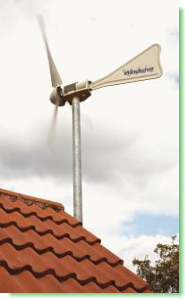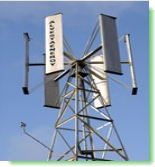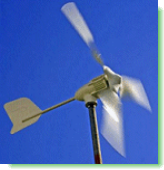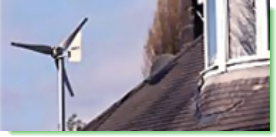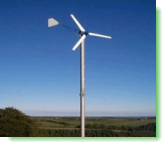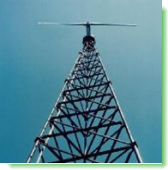eco
design
OUR MISSION
WHO WE ARE
PROJECTS
ECO TECHNOLOGY
CONTACT US
Wind
Turbines
WWW. IRISH ECO
ARCHITECTS.COM
M.C.M
Architecture & Surveying Ltd t/a Eco Architects
Ireland © MCM Architects 2009:: Design by NASSY
Eco Architects Ireland - Innovation, Attention
to Detail, Vision, Thinking out of the Box, Expertise.
ECOLOGICAL TECHNOLOGIES
Generate
electricity at home with small-scale wind turbines
Wind turbines harness
the power of the wind and use it to generate electricity. Small systems known as
"microwind" turbines can produce enough electricity for the lights and
electrical appliances in a typical home.
Over 40% of all the wind energy
in Europe blows over Ireland & the UK, making it ideal country for
microwind turbines.
* How do microwind turbines
work?
* The benefits of wind
electricity
* Is wind electricity suitable for my
home?
* Making the most of wind
electricity
* Costs and savings
How
do wind turbines work?
Wind turbines use large blades to catch the wind. When the
wind blows the blades are forced round, driving a turbine which generates
electricity. The stronger the wind, the more electricity produced.
There
are two types of domestic-sized microwind turbine:
* Mast mounted: these are
free standing and are erected in a suitably exposed
position.
*
Roof mounted: these are smaller than mast mounted systems and can be installed
on the roof of a home.
If your
microwind system is connected to the National Grid then you can make money by
selling any generated electricity to an electricity supply company.
If
the turbine is not connected to the electricity grid then unused electricity can
be stored in a battery for use when there is no wind.
In Ireland &
the UK & we have over 40% of Europe's total wind
energy
The
benefits of wind electricity
* Harness a plentiful energy source:
we have over 40% of Europe's total wind energy.
* Cut your
carbon footprint: wind electricity is green, renewable energy and doesn't
release any harmful carbon
dioxide or other
pollutants.
* Cut your electricity bills: wind is free, so
once you've paid for the initial installation your electricity costs will be
reduced.
* Store electricity
for a calm day: if your home isn't connected to the National Grid you can store
excess electricity
in batteries and use it when
there is no wind.
Is wind electricity suitable for my
home?
To tell if a microwind turbine is right for you, there are
a few key questions to consider:
* Are there any
large obstacles like buildings, trees or hills near your home? Microwind
turbines work best in
exposed locations, without
turbulence caused by these type of obstacles
* Is your
home is a windy area? To be effective you need an average windspeed of more than
6m/s.
* Is your home located away from the National Grid?
Microwind systems are particularly suitable for use in remote
locations where mains electricity is
unavailable.
* Do you need planning permission? Microwind
systems normally do require permission from your local authority
so check before you install a system.
Ideally, you
should undertake a professional assessment of the local windspeed for a full
year at the exact location where you plan to install a
turbine.
To make the electricity you produce go
further:
* invest in energy efficient appliances
- find energy saving products
* use energy when the wind
is blowing - do your laundry on a windy day to take advantage of the free
electricity
* charge up your batteries whenever you have
excess electricity
Costs and savings
Costs for a roof
mounted microwind system start at about €2,000. Larger mast mounted systems cost
between €12,000 and €25,000, including installation. These provide enough
electricity for lighting and appliances in a typical home.
